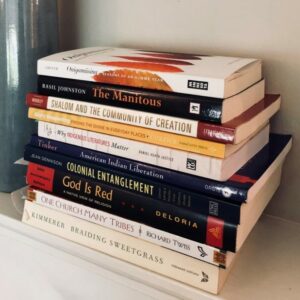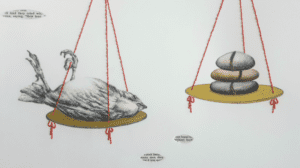
In recent years, I have taught an upper-level Christology course in which we examine race, gender, and power. Sometimes my students register their dissatisfaction with reading Christology from the margins (James Cone, Kelly Brown Douglas, and Marcella Althaus-Reid) instead of the center (Anselm, Barth, von Balthasar, and Rahner). I can understand their frustration and discomfort. In the classroom, I make an effort to accept it and to take it seriously. I should also note that I teach at a university where the student population is mostly white.
By and large, their affective discomfort has to do with shifting power dynamics within the classroom space and a kenosis of educational privilege within a system that gives primacy to imperial forms of knowing, learning, and doing. This occurs on multiple planes. For students unfamiliar with critical race theory, my class means additional reading to catch up to where these thinkers are coming from. For other students, the class involves confronting the ways in which their own race, ethnicity, gender, and/or orientation participates in social injustice.
For students unfamiliar with critical race theory, my class means additional reading to catch up to where these thinkers are coming from.
The following is a list of some of the strategies that I employ in order to address this “tightly wound” affective educational space. Since my teaching style demands that I disclose what I am doing and why, I also share these thoughts with the students in my classes.
- Start with reflection on epistemic location and communities of accountability. On the first day of class, students are asked to write a three-page paper in which they describe aspects of their epistemic location and the ways that it informs their academic/professional commitments. After sharing their papers in small groups, students brainstorm around two questions: what might be some challenges for our learning together, and what might be some strengths present in our community? The results of this discussion are shared with the large group and become the basis for shaping a class contract for learning. This exercise is important because it creates space for students to begin to articulate the dynamics of power and privilege that are operative in the classroom.
- Build community outside the classroom. At the beginning of the semester, I require attendance at two academic lectures/events on campus that are relevant to the course. I usually ask that we attend these events as a class. I do this for two reasons. First, I want to build community outside the classroom space. There is something about sitting on the floor at the back of a packed lecture hall and eating cookies that helps to accomplish this. Second, the community event brings the class, as a whole, into a larger body of accountability that is addressing racial injustice.
- Assign students to write about their feelings. Each semester I ask my students to write about how they feel about talking about race in a Christology course. I invite them to read these statements in class. While this exercise makes some people feel uncomfortable, it is usually a turning point in the course. It is important for those who are frustrated to have the opportunity to voice this frustration. It is equally important for those who feel relieved to finally be able to speak about race in a theology classroom to voice this as well. The students need to hear from one another, and not just me, why discussing race in a theology classroom is both frustrating and important.
- Practice appropriate vulnerability. As a female who teaches in a Roman Catholic institution, I have a heightened awareness of power dynamics. Yet, as Mary Elizabeth Hobgood writes, as a white heterosexual middle-class person I continue to benefit from more privilege than I suffer oppression. In this context, I share some of my own personal experiences and how they intersect not only with the texts that we read, but also with the ways in which the discussion unfolds. In doing so, I challenge the assumption that anyone (even the professor) can operate within an educational space as a neutral observer (see George Yancy’s work). I also make explicit that the classroom space is shared space. What I say and do shapes what others say and do.
- Challenge students to do constructive work. As academics, we are taught to critique the work of others early on in our careers. This is an important skill. Yet, critiquing someone else’s work is much easier than doing constructive work. Therefore, when sessions focus too much on critiquing an author instead of reading with a hermeneutic of generosity, I change tactics. I ask students to get into small groups and to come up with their best critique of the work that we are discussing for the day. Then, I ask them to come up with a strategy that responds to the critique and the social issue at hand.
The students need to hear from one another, and not just me, why discussing race in a theology classroom is both frustrating and important.
Talking about race is hard work. Many of my students have been willing to do this work. For this, I am really grateful. The success of any given class depends upon our willingness to be stretched and to take risks with the material and with one another. It is in those moments of vulnerability that growth in understanding occurs.
Elisabeth T. Vasko, Ph.D., is Assistant Professor of Theology at Duquesne University. This essay appears on the Wabash Center blog Race Matters in the Classroom and appears here by kind permission of the author and the Wabash Center.


